Rock Bolt V.S. Soil Nail: What Are The Differences?
Time:2023-11-15From:sinorock View:
Introduction
In the ever-evolving realm of geotechnical engineering, the choice between rock bolts and soil nails plays a pivotal role in ensuring the stability of structures in challenging terrains. As construction projects push boundaries, professionals are faced with the decision of selecting the most suitable ground reinforcement method. This article aims to shed light on the differences between rock bolts and soil nails, exploring their applications and implications in contemporary construction.
I. Understanding Rock Bolts
Definition and Purpose
Rock bolts are a fundamental component of ground support systems, employed to enhance the stability of rock masses. These are essentially long, steel rods installed into the rock, anchoring it in place. The primary purpose of rock bolts is to prevent rockfalls, collapses, and other forms of instability in excavation sites and underground structures.
Varieties of Rock Bolts
The design of rock bolts depends on the rock quality and type of excavation. The industry has witnessed the evolution of various rock bolt types, more and more types of rock bolts are being developed and put into use. The types we are currently familiar with include thread steel rods, hollow anchor bars, friction bolts, resin-anchored bolts, swellex rock bolts, self-drilling anchor bolts, as well as grouted cables, etc.
Most kinds of rock bolts rely on expansion within the borehole, creating frictional resistance, while resin-anchored bolts involve the injection of resin into the hole for enhanced stability.
Applications of Rock Bolts
Rock bolts find extensive use in tunneling, mining, and slope stabilization. According to a study conducted by the International Journal of Rock Mechanics and Mining Sciences, rock bolts are crucial in preventing roof collapses in underground mines, reducing the risk of accidents and ensuring worker safety.

II. Unveiling Soil Nails
Definition and Purpose
Soil nails, akin to rock bolts, are reinforcement elements designed to stabilize soil slopes. Unlike rock bolts, which are primarily used in rock masses, soil nails are employed in loose or cohesive soil. These are typically slender steel bars grouted into pre-drilled holes to provide additional tensile strength to the soil.
Varieties of Soil Nails
Soil nail systems are passive reinforcement of the existing ground. Nails are typically steel bars placed in a drilled hole and grouted and can be installed either horizontally or vertically. Nails can also be launched into the ground and consist of different materials.
Soil Nail Walls can be temporary or permanent and may be faced with reinforced concrete, shotcrete, high tensile strength wire mesh, and wood or steel lagging.
Applications of Soil Nails
The applications of soil nails span a wide range, from slope stabilization in transportation projects to retaining wall construction in urban developments. A case study published in the Geotechnical and Geological Engineering journal revealed that soil nails were instrumental in mitigating slope failures during the construction of a highway, underscoring their significance in ensuring the longevity of infrastructure.

III. The Differences Between Rock Bolts and Soil Nails
Material Composition
One of the primary distinctions lies in the material composition. Rock bolts are predominantly made of high-strength steel due to the demanding nature of rock masses. In contrast, soil nails, dealing with less abrasive conditions, can incorporate materials such as fiberglass or steel.
Load Transfer Mechanism
Another key difference lies in the load transfer mechanism. Rock bolts are actively stressed, i.e. by applying prestress to the anchor bars, the excessive deformation of the soil is restricted before the excavation. Soil nail is passively stressed, i.e. after a certain deformation of the soil body, the soil nail is stressed, thereby preventing the soil from continuing to deform.
Rock bolt is the free end of the front half and forced section of the rear half, so sometimes mortar is not filled in the front half of the rock bolt. Soil nail is full-length force, but the direction of load force is divided into two parts.
When soil structure is deformed, the soil nail will provide resistance to this deformation, and then the force characteristics are the same as the rock bolt, except that it is a full-length force. At this time, The direction of the two broken forces which are divided by the sliding surface is the same, both pointing in the slope. Rock bolt, on the other hand, is actively stressed under prestress and always provides resistance to the slope, and will degrade to a soil nail as the prestress is lost and the deformation of the slope stops.
Suitability for Different Geologies
The geological conditions play a crucial role in determining the choice between rock bolts and soil nails. Rock bolts are inherently suited for rock masses, offering robust support in challenging terrains. Soil nails, on the other hand, excel in loose or cohesive soil, providing effective stabilization in areas where rocks are not the primary concern.
IV. Contemporary Applications and Industry Trends
Integration of Technology
With the advent of advanced technologies, the geotechnical industry is witnessing a surge in the integration of monitoring systems with both rock bolts and soil nails. Real-time data on stress, strain, and displacement are crucial for assessing the effectiveness of these reinforcement methods and ensuring the ongoing safety of structures.
Environmental Considerations
As sustainability becomes a focal point in the construction industry, the environmental impact of ground reinforcement methods is gaining prominence. Soil nails, requiring less energy-intensive installation processes compared to rock bolts, are often considered a more environmentally friendly option in certain scenarios.
Hybrid Approaches
In complex geological settings, engineers are increasingly adopting hybrid approaches that combine the strengths of both rock bolts and soil nails. This involves strategic placement and integration to capitalize on the benefits of each method, providing a tailored solution for challenging construction projects.
V. Conclusion
In the dynamic landscape of geotechnical engineering, the choice between rock bolts and soil nails is a critical decision that can significantly impact the success and safety of construction projects. While rock bolts excel in rocky terrains, providing robust support in challenging conditions, soil nails offer a versatile solution for stabilizing loose or cohesive soils.
As construction methods continue to evolve, and with the increasing emphasis on sustainability, the geotechnical industry is witnessing a paradigm shift. Engineers are now integrating advanced technologies, exploring hybrid approaches, and considering the environmental implications of their choices. In the pursuit of geotechnical stability, whether through the unyielding strength of rock bolts or the adaptive nature of soil nails, professionals must weigh the pros and cons, staying abreast of industry trends and innovations.
As a leading expert in the ground support industry, Sinorock team has many years of experience in providing complete geotechnical engineering services. If you have any needs or questions about geotechnical engineering, please feel free to contact us at sinorock@sinorockco.com.
latest news
-
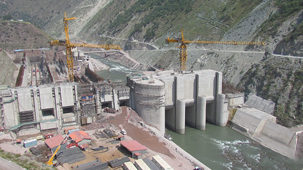
- What Are the Applications of SDA Bolts in Hydropower Stations?
- Time:2025-08-21From:This Site
- Learn how self-drilling anchor bolts enhance slope stability, tunnel support, and dam reinforcement in complex geological conditions at hydropower stations. Optimize hydropower projects with efficient, cost-effective, and eco-friendly solutions.
- View details
-
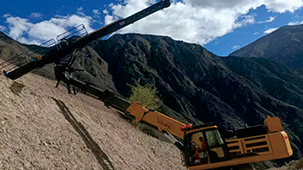
- Slope Stabilization with SDA Bolts: Benefits & Applications
- Time:2025-08-19From:This Site
- Discover how self-drilling anchor bolts (SDA bolts) provide superior slope stabilization for highways, railways, and tunnels. Learn their key benefits, installation process, and real-world applications in loose or collapsible soils.
- View details
-
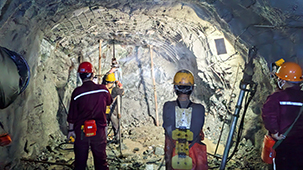
- How Self-Drilling Rock Bolts Enhance Tunnel Support in Fractured Rock?
- Time:2025-08-15From:This Site
- Discover how self-drilling rock bolts enhance tunnel support in fractured rock. Learn their benefits, installation steps, and real-world applications for safe, efficient tunneling.
- View details
-
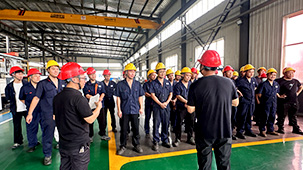
- Sinorock 2025 Quality Month | Strengthening Quality Foundations, Empowering Product Excellence
- Time:2025-08-13From:This Site
- Sinorock’s 2025 Quality Month, themed “Strengthening Quality Foundations, Empowering Product Excellence,” successfully concluded, reinforcing our commitment to superior product quality.
- View details
-
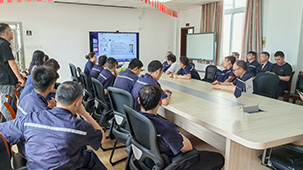
- Sinorock Safety Month 2025 | Everyone Speaks Safety, Everyone Can Respond
- Time:2025-07-03From:This Site
- Sinorock Safety Month 2025, centered on the theme "Everyone Speaks Safety, Everyone Can Respond - Spot Workplace Hazards," has wrapped up successfully!
- View details
-

- Quality Control: the Vital Factor of A SDA Bolt Factory
- Time:2025-01-09From:This Site
- Sinorock’s comprehensive quality control system, from supplier management to outgoing inspections, ensuring the highest standards for self-drilling anchor bolts in construction.
- View details
-
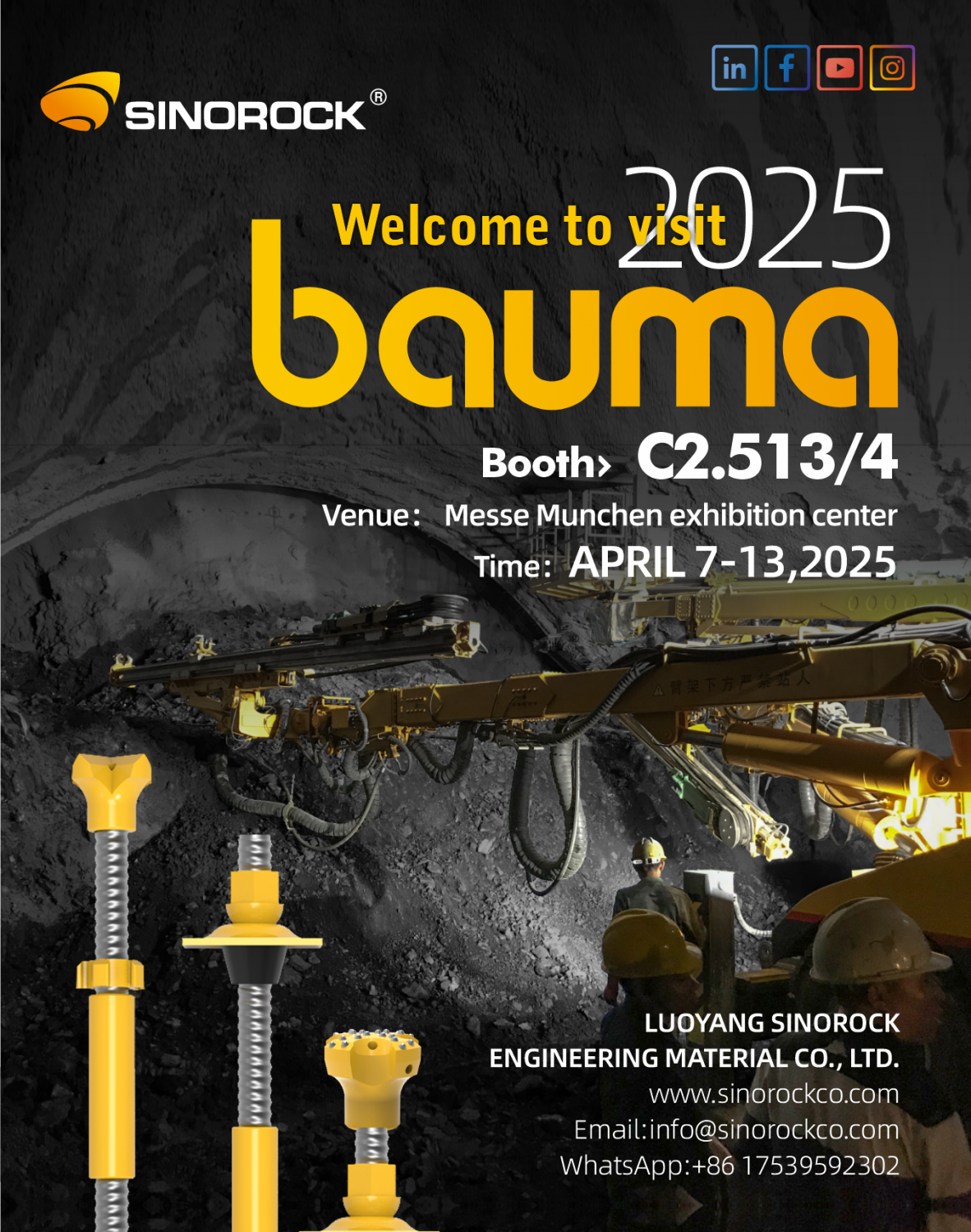
- Sinorock Invites You to Explore Proven Self-Drilling Anchor Bolt Solutions at bauma 2025
- Time:2025-03-07From:This Site
- From April 7–13, 2025, explore Sinorock’s Self-drilling anchor bolt solution at Booth C2.513/4 in Hall C2 of the Messe München Exhibition Center (Munich, Germany).
- View details
-
.jpg)
- SINOROCK to Attend EXPOMINA PERÚ 2024 in Lima, Peru
- Time:2024-08-10From:This Site
- Sinorock to Attend EXPOMINA PERÚ 2024 in Lima, Peru
- View details
-
.jpg)
- SINOROCK to Participate in MINING AND METALS CENTRAL ASIA 2024
- Time:2024-08-08From:This Site
- SINOROCK to Participate in MINING AND METALS CENTRAL ASIA 2024
- View details
 Download
Download 


